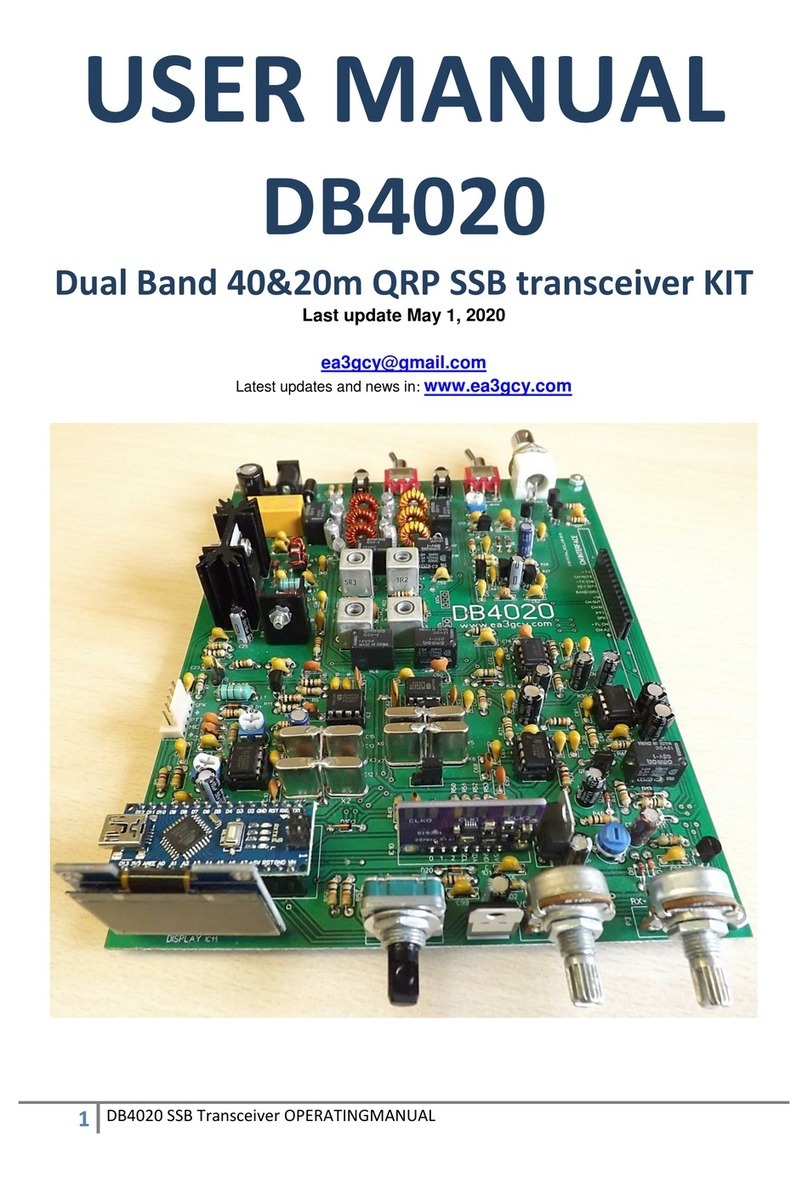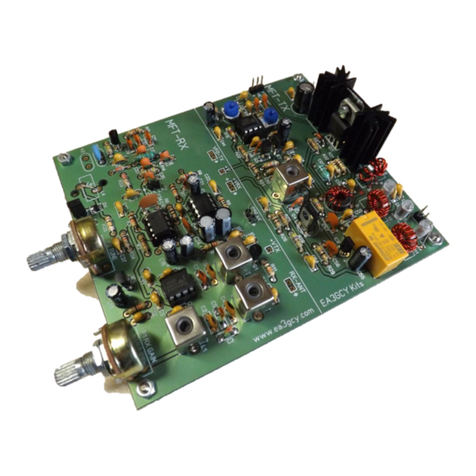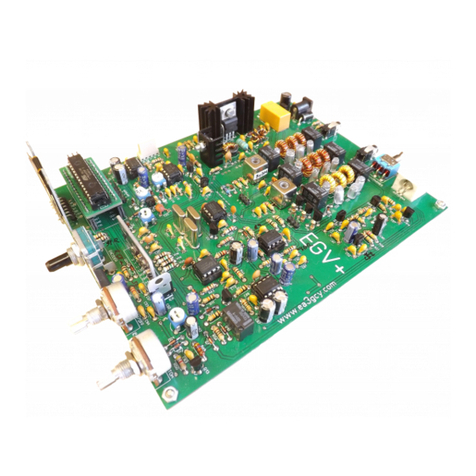ILER-40 MK2 SSB QRP Transceiver Kit Page 4
Acknowledgments
To Andy, SP5AHT, for his important contribution to the world of amateur radio.
To Jon Iza, EA3SN, for his educational articles and contribution to technical data.
To Luis EA3WX, Juan EA3FXF, Jaime EA3HFO, Alfonso EA3BFL and to J. Antonio Beltrán for the help
they gave in making this kit a reality, from the first prototype to the current ILER-17.
To “eaqrpclub.com” for keeping the "tinkering" flame burning even during difficult times.
SPECIFICATIONS
GENERAL:
Frequency coverage: VXO that tunes a 30 to 100 KHz segment of the 40M band (recommended 50-
60KHz max. to obtain reasonable stability). The range of coverage is selected by means of the value of
L6 in the VXO circuit.
Frequency control: Quartz crystal controlled oscillator (VXO).
Option A: a pair of 12.031MHz crystals. (upper limit approx. 7.105MHz)
Option B: one 12.096MHz crystal. (upper limit approx. 7.185MHz)
Variable tuning capacitor (polyvaricon).
Antenna: 50 ohms.
Power supply: 12-14VDC, 35mA in receive (without signal), 1000-1100mA in transmit.
Components: 65 resistors, 83 capacitors, 3 variable resistors, 1 trimmer capacitor, 1 potentiometer
(volume), 8 IC's, 14 transistors, 12 inductors-chokes, 6 RF transformers, 1 variable tuning capacitor, 6
crystals.
Front panel controls: tuning, volume.
Optional controls: RX attenuator potentiometer, RX attenuator switch.
External connections: mic/ptt, speaker jack, antenna, DC input.
Circuit board dimensions: 100x120 mm.
TRANSMITTER:
RF output: 4-5 W (12-14V)
Second harmonic output: -42dB below the fundamental frequency.
Other spurious signals: all signals -50dB or better below the fundamental frequency.
Carrier suppression: better than -45dB.
T/R switching: Relays.
Microphone preamp with bandpass.
Microphone: dynamic, approx. 600 ohms, CB type or similar (not included).
RECEIVER:
Type: Superheterodyne, balanced mixer.
Sensitivity: 0.250uV minimum discernible signal.
Selectivity: 4-pole crystal ladder filter, 2.2 KHz nominal bandwidth.
IF Frequency: 4.915 MHz.
Built-in audio preamp and AGC.
Audio output: 250mW @ 8 Ohms.

































